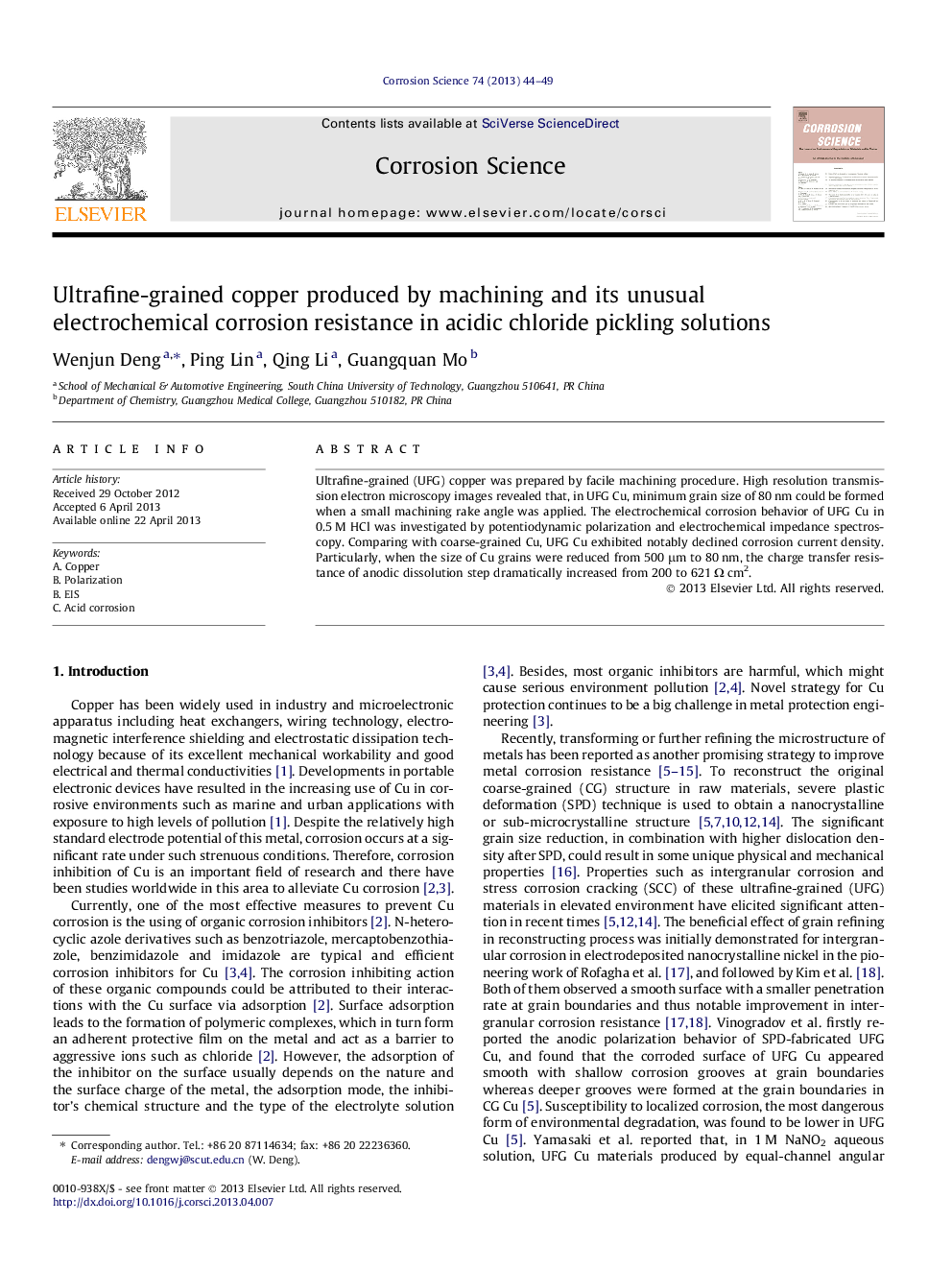| Article ID | Journal | Published Year | Pages | File Type |
|---|---|---|---|---|
| 1469123 | Corrosion Science | 2013 | 6 Pages |
•Ultrafine-grained copper with average grain diameter of 80 nm was prepared by machining technology.•Ultrafine-grained copper, comparing with coarse-grained copper, displayed notable decreased anodic corrosion current.•Ultrafine-grained copper presented a large charge transfer resistance of 621 Ω cm2.
Ultrafine-grained (UFG) copper was prepared by facile machining procedure. High resolution transmission electron microscopy images revealed that, in UFG Cu, minimum grain size of 80 nm could be formed when a small machining rake angle was applied. The electrochemical corrosion behavior of UFG Cu in 0.5 M HCl was investigated by potentiodynamic polarization and electrochemical impedance spectroscopy. Comparing with coarse-grained Cu, UFG Cu exhibited notably declined corrosion current density. Particularly, when the size of Cu grains were reduced from 500 μm to 80 nm, the charge transfer resistance of anodic dissolution step dramatically increased from 200 to 621 Ω cm2.
Graphical abstractMachining procedure was successfully developed to prepare ultrafine-grained (UFG) copper materials with unusual electrochemical corrosion resistance in acidic chloride pickling solutions. In contrast to the coarse-grained copper, the UFG copper displayed a notable decreased anodic corrosion currents density as well as large charge transfer resistance (Rct) of anodic dissolution step. Machining is an efficient method to produce UFG copper materials possessing enhanced electrochemical corrosion resistance, which is promising for industrial and microelectronic applications.Figure optionsDownload full-size imageDownload as PowerPoint slide
